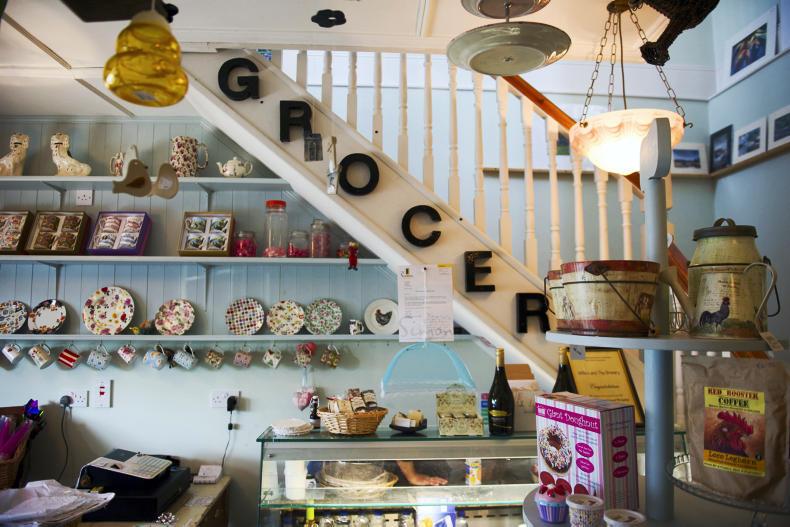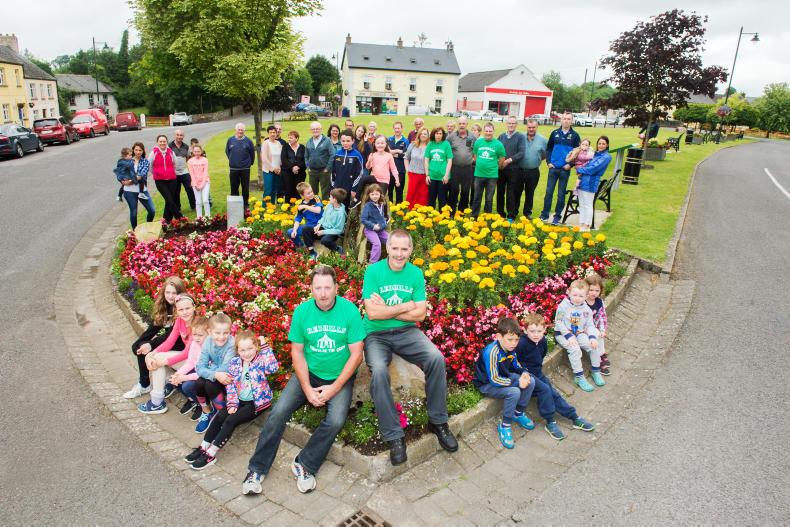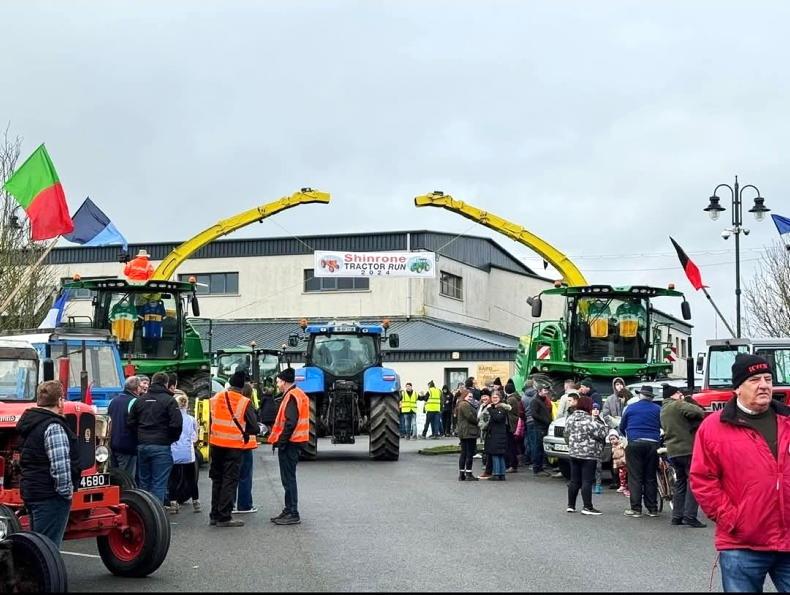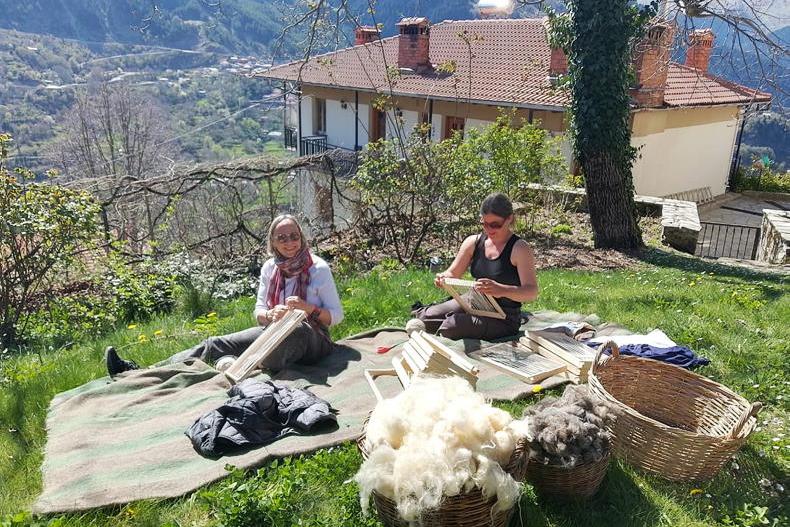Don’t be codded if you drive through a village in rural Ireland and it seems quiet. It’s only sometimes silent. People are at work and you may be missing the community centre hub that’s off a side road. Go there at school times, in the evenings or at weekends and it’s a different story. A peek at the notice board in the community centre will tell you how many organisations exist in that village. It will also give an insight into how many people are rolling up their sleeves to work for the common good.
Villages with vision? There are lots of them out there. The It Takes A Village series has visited many of them and will continue to do so.
Using the Tidy Towns A and B population categories only (so that apples are compared with apples) and doing some advance research to find out what’s going on where, a visit to the chosen village is then organised, along with interviews with the main people involved in community development.
So, at this stage, what did we find were the most common reasons for people to set out on the road to improvement?
Triggers for development
In Tacumshane, Co Wexford, it was not being able to look at an “eyesore” anymore. They renovated the old school and it has now because a meeting place for the locality. “Putting the heart back in the village” was how they described it.
In other villages it was about wanting jobs for their children when they grow up like in Louisburgh, Co Mayo where women newly settled there saw the tourism potential if everyone worked together. They set up an information and craft hub in the village.
In Clogheen, Co Tipperary, their Santa run and “shop local” voucher system was about keeping money in the locality at Christmas. In Tyrellspass, it was about enticing tourists off the motorway. In places like Knockanore, Ballon and Bunnanaddan it was about developing a great multi-purpose complex.

Bowls, with Sharon Amber, Pauline Rogers, Terry Wetherald, Nick, Jeff Amber ( taking his shot) Sean Carew, Marty Dolphin, John Keenan at Bunnanadden Community Centre.
In Knockatallon, Co Monaghan it was about a lack of accommodation and so they took the giant step of opening a community hotel.
For all, it’s about not waiting for the cavalry to come over the hill. Instead it has been about taking up shovels and spades to stage a community fight back, in some cases against emigration and depopulation, as was said in O’Gonnolloe.

Locals, staff and volunteers at the Knockatallon article is the Slieve Beagh community hotel. \ Barry Cronin
Characteristics of villages with vision
But what are the characteristics of the villages we’ve visited?
One or more serious community drivers, I would say, who see a need and set about tackling it, even if it means signing guarantees for community loans for a project – not a thing to be done lightly.
“He takes time off for the Christmas dinner and then he’s back thinking about what next we can do!”

Members of the School Gardening Club in Ballon in 2015.
That’s what I heard in one village. The community drivers usually have lots of skills born of being in business or being parents, coupled with a huge desire to put the place where they live on the map.
They can chair meetings well, get people behind them, sort out conflict – and retain a sense of humour.
In some places the Gathering in 2013 got people started. In others, residents were long-time competitors in the national Tidy Towns competition and this gave them a strong base to develop from.
Volunteering is at the heart of all village improvements, of course.
“If you took the voluntary sector out of Ireland it would be on the rocks” was a common statement.

The Grocery in Tyrrellspass, Co Westmeath. \ Barry Cronin
A good community centre is deemed essential, everyone said. “A hub built by the people for the people” and “we could do nothing until we got it” – those words were echoed frequently.
A person not afraid of filling out forms (ie grant forms) – that’s another characteristic of a thriving village. Most villages have someone who keeps up to date on available grants and works hard at the process of applying.
Generational family involvement is a common thread too – sometimes we’ve come across three generations involved in organising village events, setting good example and creating leaders for the future.
An important aspect of the It Takes A Village series is that it provides tips for villages who would like to make a start on development. Here are a few gleaned so far:
1 Get involved immediately with local development organisations like LEADER and your County Council.2 Organise activities that attract families. “If you organise a ‘switching on the Christmas lights’ event they will come.” 3 Work on a Village Design Statement – “without a plan you’re going nowhere”.4 Think projects rather than committees. Have a “virtual bus”system where people jump on the bus to get a playground developed, for example, then hop off.5 Work with what you have while you fundraise for a new community centre eg buy a coffee machine for the old parish hall and hold Saturday morning coffee morning. “People will come here that wouldn’t go into a café in town. It reduces social isolation.”6 Set up a “Tidy Tweens” group to get children involved in village tidiness.7 If there is a long standing committee, let the younger cohort set up an extra one and develop their own projects. 8 Have a good website or Facebook page. Use text/WhatsApp system to communicate. 9 Publish a newsletter, local map and business directory.10 Open a community “recycling” shop to fund improvement projects in the area.11 Enter competitions – they can provide focus and a lot of excitement. 12 Organise an annual festival or village party.13 Hold networking get-togethers for self-employed people who work from home.14 Welcome “new blood” into the village with open arms. 15 Fight for better mobile phone reception and broadband. 16 Keep heritage alive by highlighting the history of your village – stage re-enactments, hold an exhibition, publish a booklet.17 Invite experts in to give talks on different topics.18 Cite tax-relief benefit when appealing for funds to get buy-in from villagers for big projects.19 If you are renovating a building, paint the outside first – seeing the difference inspires others to help. 20 Always be aware of what grants are available.The It Takes A Village series was introduced to Irish Country Living by Róisín Healy. She wrote the first two articles featuring Rathdangan in Co Wicklow and Killea, Co ClareRTÉ’s Today with Maura & Daithí show ran a competition called “Villages With Vision” in conjunction with the Irish Farmers Journal in 2016 as an offshoot of this series. Read more
It takes a village: where the border splits a village in two
It takes a village: community 'buy-in' in Bunnanaddan
Don’t be codded if you drive through a village in rural Ireland and it seems quiet. It’s only sometimes silent. People are at work and you may be missing the community centre hub that’s off a side road. Go there at school times, in the evenings or at weekends and it’s a different story. A peek at the notice board in the community centre will tell you how many organisations exist in that village. It will also give an insight into how many people are rolling up their sleeves to work for the common good.
Villages with vision? There are lots of them out there. The It Takes A Village series has visited many of them and will continue to do so.
Using the Tidy Towns A and B population categories only (so that apples are compared with apples) and doing some advance research to find out what’s going on where, a visit to the chosen village is then organised, along with interviews with the main people involved in community development.
So, at this stage, what did we find were the most common reasons for people to set out on the road to improvement?
Triggers for development
In Tacumshane, Co Wexford, it was not being able to look at an “eyesore” anymore. They renovated the old school and it has now because a meeting place for the locality. “Putting the heart back in the village” was how they described it.
In other villages it was about wanting jobs for their children when they grow up like in Louisburgh, Co Mayo where women newly settled there saw the tourism potential if everyone worked together. They set up an information and craft hub in the village.
In Clogheen, Co Tipperary, their Santa run and “shop local” voucher system was about keeping money in the locality at Christmas. In Tyrellspass, it was about enticing tourists off the motorway. In places like Knockanore, Ballon and Bunnanaddan it was about developing a great multi-purpose complex.

Bowls, with Sharon Amber, Pauline Rogers, Terry Wetherald, Nick, Jeff Amber ( taking his shot) Sean Carew, Marty Dolphin, John Keenan at Bunnanadden Community Centre.
In Knockatallon, Co Monaghan it was about a lack of accommodation and so they took the giant step of opening a community hotel.
For all, it’s about not waiting for the cavalry to come over the hill. Instead it has been about taking up shovels and spades to stage a community fight back, in some cases against emigration and depopulation, as was said in O’Gonnolloe.

Locals, staff and volunteers at the Knockatallon article is the Slieve Beagh community hotel. \ Barry Cronin
Characteristics of villages with vision
But what are the characteristics of the villages we’ve visited?
One or more serious community drivers, I would say, who see a need and set about tackling it, even if it means signing guarantees for community loans for a project – not a thing to be done lightly.
“He takes time off for the Christmas dinner and then he’s back thinking about what next we can do!”

Members of the School Gardening Club in Ballon in 2015.
That’s what I heard in one village. The community drivers usually have lots of skills born of being in business or being parents, coupled with a huge desire to put the place where they live on the map.
They can chair meetings well, get people behind them, sort out conflict – and retain a sense of humour.
In some places the Gathering in 2013 got people started. In others, residents were long-time competitors in the national Tidy Towns competition and this gave them a strong base to develop from.
Volunteering is at the heart of all village improvements, of course.
“If you took the voluntary sector out of Ireland it would be on the rocks” was a common statement.

The Grocery in Tyrrellspass, Co Westmeath. \ Barry Cronin
A good community centre is deemed essential, everyone said. “A hub built by the people for the people” and “we could do nothing until we got it” – those words were echoed frequently.
A person not afraid of filling out forms (ie grant forms) – that’s another characteristic of a thriving village. Most villages have someone who keeps up to date on available grants and works hard at the process of applying.
Generational family involvement is a common thread too – sometimes we’ve come across three generations involved in organising village events, setting good example and creating leaders for the future.
An important aspect of the It Takes A Village series is that it provides tips for villages who would like to make a start on development. Here are a few gleaned so far:
1 Get involved immediately with local development organisations like LEADER and your County Council.2 Organise activities that attract families. “If you organise a ‘switching on the Christmas lights’ event they will come.” 3 Work on a Village Design Statement – “without a plan you’re going nowhere”.4 Think projects rather than committees. Have a “virtual bus”system where people jump on the bus to get a playground developed, for example, then hop off.5 Work with what you have while you fundraise for a new community centre eg buy a coffee machine for the old parish hall and hold Saturday morning coffee morning. “People will come here that wouldn’t go into a café in town. It reduces social isolation.”6 Set up a “Tidy Tweens” group to get children involved in village tidiness.7 If there is a long standing committee, let the younger cohort set up an extra one and develop their own projects. 8 Have a good website or Facebook page. Use text/WhatsApp system to communicate. 9 Publish a newsletter, local map and business directory.10 Open a community “recycling” shop to fund improvement projects in the area.11 Enter competitions – they can provide focus and a lot of excitement. 12 Organise an annual festival or village party.13 Hold networking get-togethers for self-employed people who work from home.14 Welcome “new blood” into the village with open arms. 15 Fight for better mobile phone reception and broadband. 16 Keep heritage alive by highlighting the history of your village – stage re-enactments, hold an exhibition, publish a booklet.17 Invite experts in to give talks on different topics.18 Cite tax-relief benefit when appealing for funds to get buy-in from villagers for big projects.19 If you are renovating a building, paint the outside first – seeing the difference inspires others to help. 20 Always be aware of what grants are available.The It Takes A Village series was introduced to Irish Country Living by Róisín Healy. She wrote the first two articles featuring Rathdangan in Co Wicklow and Killea, Co ClareRTÉ’s Today with Maura & Daithí show ran a competition called “Villages With Vision” in conjunction with the Irish Farmers Journal in 2016 as an offshoot of this series. Read more
It takes a village: where the border splits a village in two
It takes a village: community 'buy-in' in Bunnanaddan













SHARING OPTIONS